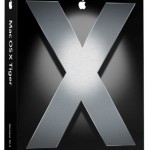The eternal Mac OS on Intel rumor resurfaced last week, and as always, my reaction was “I’ll believe it when I see it.” Well, I’ve seen it.
After five years of rumors, Apple has not only confirmed Mac OS X can run on Intel processors, but future Macs will run on Intel. No, they won’t be releasing a version of Mac OS that you can install on your PC, they’re “just” replacing the CPUs in future Macs. Apparently Intel has a better road map for future performance. (Hmm, better tell the marketing division, quick. The PowerMac page [archive.org] still touts the PowerPC’s superiority over the Pentium 4.)
It’s a switch on the order of—well, on the order of leaving the Motorola 68K for PowerPC. Back in those days, it was Apple vs. IBM Compatibles, and IBM was a partner in the PowerPC design. These days it’s Apple vs. Wintel, the Windows/Intel combination.
Apple seems to have everything planned out. Secretly running OS X on both PPC and x86 for the past five years, preparing developer tools to produce applications for both architectures, setting up a translation tool to run PPC apps on Intel chips. Microsoft and Adobe are already on board. It’s not a surprise, really—they’ve done it all before. Of course, we all know how well the best laid plans go…
I do have to wonder how this will affect Linux distributions aimed at the PowerPC line. Yellow Dog Linux, for instance, is also advertised as running on IBM’s own PowerPC systems. And depending on the rest of the hardware, standard x86 distros may have to incorporate formerly PPC-only code. Update: It hasn’t shown up on their website yet, but I just got an email from YDL stating that they will remain focused on PowerPC, remain “in good standing with Apple” as a reseller, and “expect [server OS] Y-HPC to gain an even greater userbase with existing Apple Xserve users.”
I also wonder which Intel chip line they plan on using. Everyone seems to be assuming it’s x86-based, and I’d guess it’s 64-bit (why go backwards from the G5?). In theory Apple could go with Itanium, since they don’t need to drag around x86 compatibility, and the extra volume might be enough to bring the price down.
 In checking my pre-order status for
In checking my pre-order status for 
 I assumed it was yet another book about the OS timed to come out just as people would be interested. No, it’s the 1982 rock album by Survivor, featuring the well-known Rocky III theme…which has now lodged itself firmly in my head.
I assumed it was yet another book about the OS timed to come out just as people would be interested. No, it’s the 1982 rock album by Survivor, featuring the well-known Rocky III theme…which has now lodged itself firmly in my head.